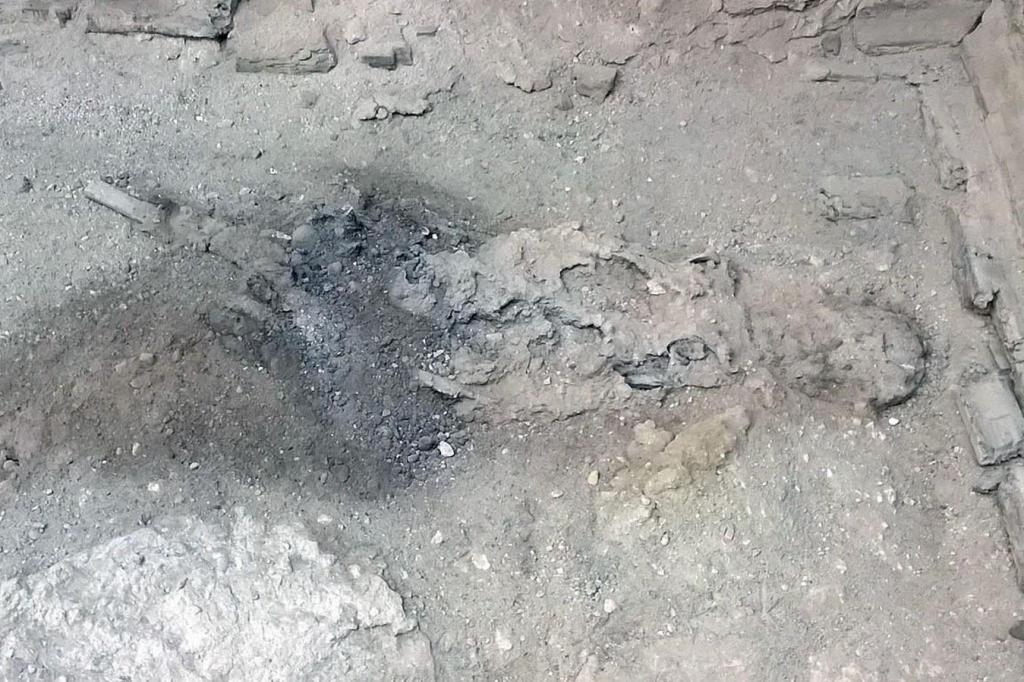Young Man's Brain Turned to Glass by Vesuvius Eruption
Explore the remarkable preservation of a young man's brain turned to glass by the Vesuvius eruption, revealing secrets of ancient human biology.

Key Points
- A young man's brain was transformed into glass during the catastrophic eruption of Mount Vesuvius
, showcasing a unique preservation process called vitrification.
- The intense heat from pyroclastic flows reached temperatures above 510 °C, allowing the brain’s neural structures to survive remarkably intact.
- This discovery not only challenges previous concepts of brain preservation but also highlights the potential for volcanic eruptions to create unparalleled archaeological records.
Nearly 2,000 years ago, the world witnessed one of nature's most catastrophic events. The eruption of Mount Vesuvius not only reshaped the landscape of southern Italy but also left a profound imprint on our understanding of human preservation. A recent study has revealed an astonishing finding: the brain of a young man who perished during the eruption was transformed into glass due to the extreme conditions surrounding the volcanic activity.
This remarkable preservation process, which researchers have dubbed vitrification, occurred when superheated ash clouds enveloped the victim, causing his soft tissue to liquefy and subsequently cool rapidly into a glass-like substance. This unique event has led to the astonishing preservation of detailed neural structures within the brain, offering a rare glimpse into ancient human biology.

Understanding Vitrification in Context
To appreciate the significance of this discovery, it’s essential to understand the context of the Vesuvius eruption. In 79 CE, the volcano erupted with explosive force, releasing thermal energy equivalent to 100,000 atomic bombs. The heat generated was so intense that it resulted in the formation of pyroclastic flows—fast-moving currents of hot gas and volcanic matter that obliterated everything in their path.
Research indicates that temperatures during these flows reached well above 510 °C (950 °F). Most victims succumbed to asphyxiation or heat, but the young man whose brain was preserved experienced a rare combination of conditions that led to this astonishing preservation. His remains were discovered in the Collegium Augustalium in
, an area well sheltered from the eruption's destructive force. This likely contributed to the unique preservation of his brain.
The Significance of the Findings
The study published in
presents groundbreaking evidence supporting the hypothesis of human brain vitrification. The research team meticulously analyzed the glassy remnants found in the skull, revealing intact neurons and axons that had survived nearly two millennia. These findings not only challenge previous notions of brain preservation but also expand our understanding of the impact of extreme environmental conditions on biological tissues.
To further substantiate their claims, researchers utilized advanced techniques like scanning electron microscopy, which provided detailed images of the vitrified brain. Such unique preservation has not been documented before in both human and animal tissues, making this case truly extraordinary. Prior instances of brain preservation have usually revolved around dehydration or chemical processes, not the extreme temperatures leading to vitrification.
Implications for the Field of Archaeology
This discovery opens new avenues for research, inviting archaeologists and neuroscientists alike to rethink the processes of preservation under extreme conditions. It also emphasizes the potential of volcanic eruptions to create unparalleled archaeological records. The preservation of the young man's brain can teach us much about ancient Roman life, health, and potentially the neurological characteristics of people from that era.
While this phenomenon is rare, it stands as a testament to the unforeseen possibilities that nature can provide for scientific exploration. Additionally, it shows us the depths of human experience that can be accessed through the study of our ancestors' remains. As researchers continue to delve into these findings, they may unlock more secrets hidden within the ashes of Herculaneum and
.
A Unique Moment in Time
The story of the young man whose brain was turned to glass is not just one of tragedy; it is a celebration of the intersection between ancient history and modern science. His remains tell us a story that transcends time, bridging the gap between those who lived nearly 2,000 years ago and our contemporary society. This discovery sparks curiosity, inspiring future generations of researchers and enthusiasts to continue exploring the mysteries of our past.
In a world where knowledge is ever-evolving, this extraordinary find serves as a reminder of the resilience of life, even when faced with cataclysmic forces. The vitrified brain remains a poignant symbol of loss, perseverance, and the remarkable journey of scientific inquiry. As we uncover the layers of history left by nature’s fury, this unique moment in time will undoubtedly continue to inspire awe and wonder.


